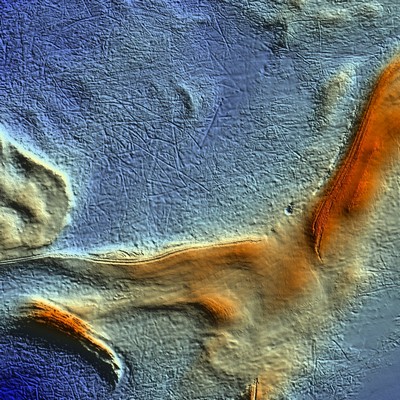In the 1990s, the Canadian Hydrographic Service adapted multibeam sonar as a tool to quickly map the seafloor in high resolution in order to create and revise hydrographic charts. Geological Survey of Canada researchers subsequently developed methods of analyzing and displaying the large amounts of data yielded by multibeam systems, and soon realized that multibeam sonar was an invaluable tool for geological mapping. It could yield digital elevation models of the seafloor with resolution of a few metres, as well as an assessment of sediment texture.
Following initial experiments, including repeat surveys off Cape Breton that showed seafloor subsidence over offshore coal mines, Survey researchers mapped selected areas of Canada's continental shelves, including most of the Bay of Fundy, Newfoundland’s Placentia Bay, and some of the offshore banks. The technique also played a role in the search for the remains of Swissair Flight 111, which tragically crashed off Nova Scotia in 1998.
Category: Maps
Decade: 1990s
References


